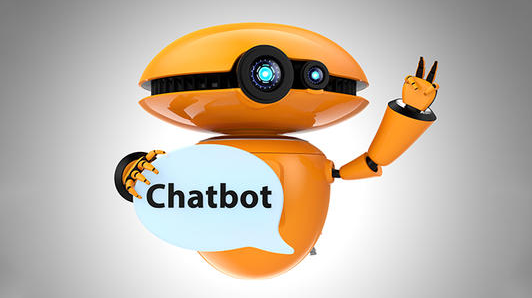
当前,人工智能已经在商业中获得了令人惊艳的应用,智能路由、代理增强、交互洞察等方式让人耳目一新。然而,这其中有一种人工智能应用形式引起了许多公司关注,因为它将决定企业战略是否获得有效落地执行。
Vanson Bourne的研究表明,现今60%的企业利用AI技术的方式都是聊天机器人。虽然大多数人都已经意识到人工智能技术扩展的重要性,但研究结果表明目前我们还无法真正实现这一目标。以呼叫中心为例,94%的公司认为有效运用人工智能技术将有助于提高绩效,但70%的公司则认为他们并没有达成这一目标。
优先考虑聊天机器人技术是一个非常正确的选择,而一些企业需要从根本上改变他们对技术的看法,从而找到真正有效运用人工智能的途径。现在,就让我们打破对人工智能的误解。
对于人工智能,有一种误解非常普遍,人们认为脚本机器人(那些由人类编程以特定方式互动和行为的机器人)就是真正的人工智能。脚本机器人是智能系统的最初级形态,已经存在了近10年,这导致许多人错误地认为它们是人工智能的第一种、也是真正的形式。之所以会形成如此广泛的错误认知,是因为很多公司在人工智能领域能做到最好的只有脚本机器人。根据Vanson Bourne的研究数据显示,这类聊天机器人也是大多数企业有效使用人工智能的唯一“形式”。脚本化的机器人更容易实现,入门门槛更低,而支持AI的机器人需要企业投入更加充足的时间和资源。
真正的人工智能不仅仅是一台被编程成模仿人类思考的电脑,这项技术应该具有自主解决问题和提高效率的能力。公司可以使用脚本机器人来简化客户服务流程,但它不知道如何分析客户交互从而更好地理解客户的情感与个性,更不用说情感引发的可相关性等下一级满意度驱动因素。脚本机器人或许能够快速解决问题,或者围绕调查展开全面对话,但这并不能证明它们是真正的人工智能。这些机器人并非建立在增强的基础上,而是建立在自动化的基础上。它们只能基于连续的对话生成数据,而人工智能则利用这些数据进行分析,并且生成可操作的见解。
令人欣慰的是,当企业计划扩展人工智能技术的时候,聊天机器人是最简单的方法之一。当企业考虑将合作伙伴关系作为生态系统的一部分,就可以开始在语音分析、情感分析和客户行程分析等领域开展工作。例如,您可以围绕聊天机器人对话应用机器学习,以更好地了解客户在特定沟通渠道中的体验类型。这可以帮助您提炼出客户所认为最重要的事情或者最重要的问题。
你可以确定一个或两个相对简单的人工智能行动,它们可以是企业能够轻松实现的目标,作为增强你的聊天机器人的战略。掌握这些简单的人工智能应用程序之后,你就可以接着考虑如何在其他业务领域中推行相同类型的技术(譬如对话分析、模式识别等)。
有效应用人工智能并不是一场比赛,需要循序渐进。对于许多优先考虑聊天机器人的组织来说,利用人工智能来改进聊天机器人的策略将是他们迈向成功的起点。
附原文:Are Chatbots True AI? Understanding the Difference
There are so many incredible ways that artificial intelligence (AI) can be applied across the enterprise: conversational intelligence, smart routing, agent augmentation, interaction insights. Yet there’s one form of AI that many companies choose to focus on, and it’s a coin toss as to whether their strategies are effective.
Research from Vanson Bourne shows that chatbot technology is the predominant form of AI for nearly 60% of companies today. While most agree on the importance of AI expansion, the research suggests an inability to effectively do so. Consider the contact center, where 94% of companies agree that effective AI helps improve performance but 70% feel they’re missing the mark.
There’s certainly nothing wrong with prioritizing chatbots, so long as you do it right. Some organizations need to fundamentally shift their perception of the technology to clear a path to truly effective AI. Let’s break this down further…
There’s a general misperception that scripted bots (those programmed by humans to interact and behave in certain ways) are true AI. Scripted bots are the earliest iteration of an intelligence system, having been around for almost a decade, which leads many to mistakenly believe they are the first (and therefore genuine) form of AI. These scripted bots are also widely considered AI because they are the best that many companies can do (Vanson Bourne’s data shows that these kinds of chatbots are the only “form” of AI that most businesses use effectively). Scripted bots are easier to implement with less barrier to entry, while AI-enabled bots require ample time and investment in resources.
True AI is not just a computer programmed to think like humans; the technology has abilities to autonomously solve problems and drive new efficiency gains. Companies can use a scripted bot to streamline customer service, but that solution won’t know how to analyze customer interactions to better understand next-level drivers of satisfaction like sentiment, personality, emotion and relatability. Scripted bots may be able to quickly resolve issues or have full conversations around an inquiry, but that doesn’t make them a true form of AI. Rather than being built on augmentation, these bots are built on automation. They generate data based on continuous conversations, whereas AI takes that data and analyzes it to generate actionable insights.
The good news is that chatbot technology is one of the easiest ways to begin the planned expansion of AI across the enterprise. Consider partnerships you can leverage as part of an ecosystem approach to begin doing work in spaces like voice analytics, sentiment, and customer journey analytics. For example, you could apply machine learning around chatbot conversations to better understand the types of experiences customers are having in that specific communication channel. That can help you pinpoint the top things customers are saying or top issues being reached out about.
Identify one or two relatively simple actions you can take (applications of AI that represent low-hanging fruit for your organization) to augment your chatbot strategy. Master these simpler applications of AI, then start considering how you can leverage the same kind of technology (conversation analysis, pattern recognition, etc.) across other areas of business.
Effective AI isn’t a race; it’s about moving one step at a time. For many organizations that prioritize chatbots, leveraging AI to improve chatbot conversation strategy is a great next step for success.









